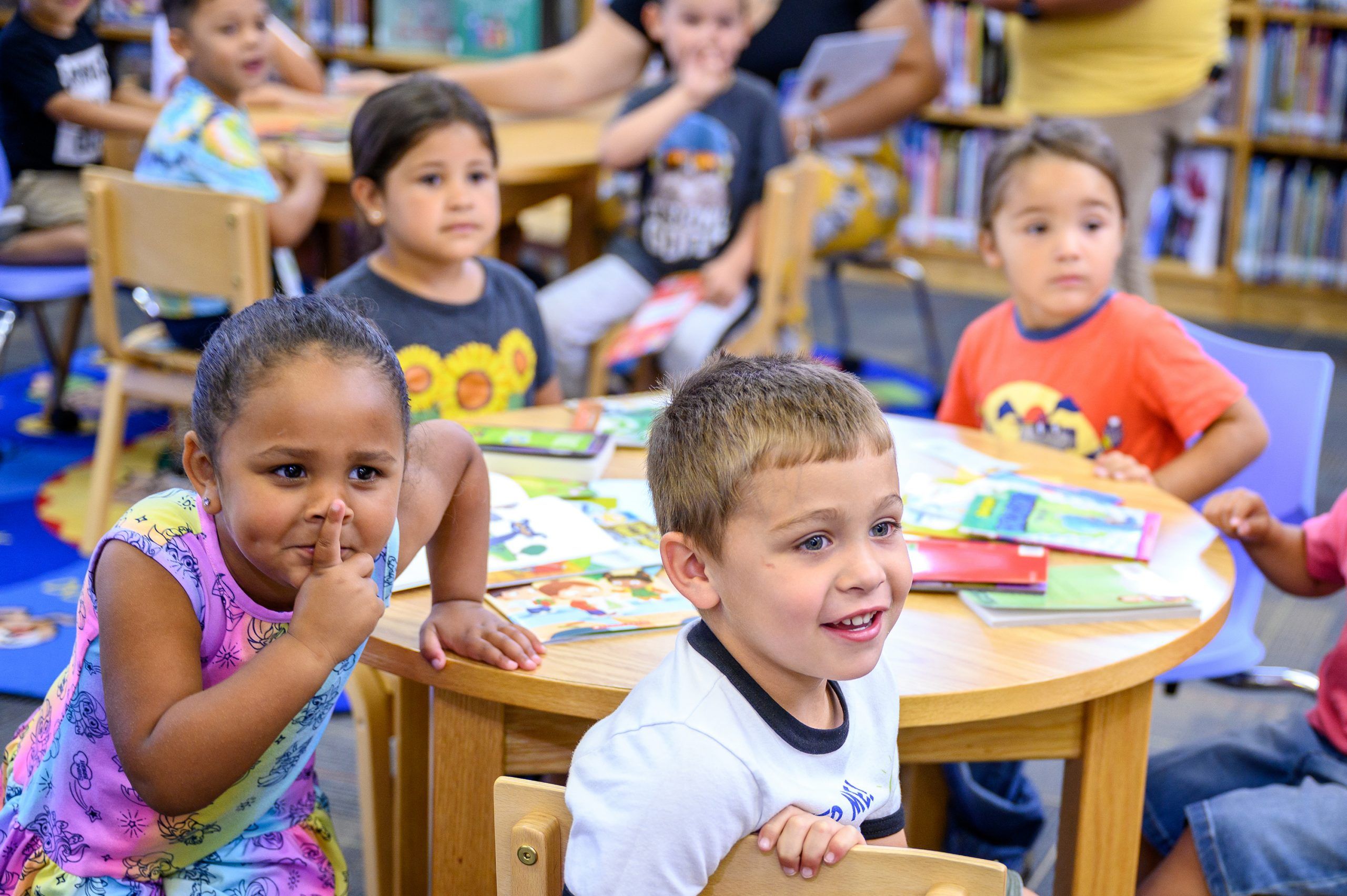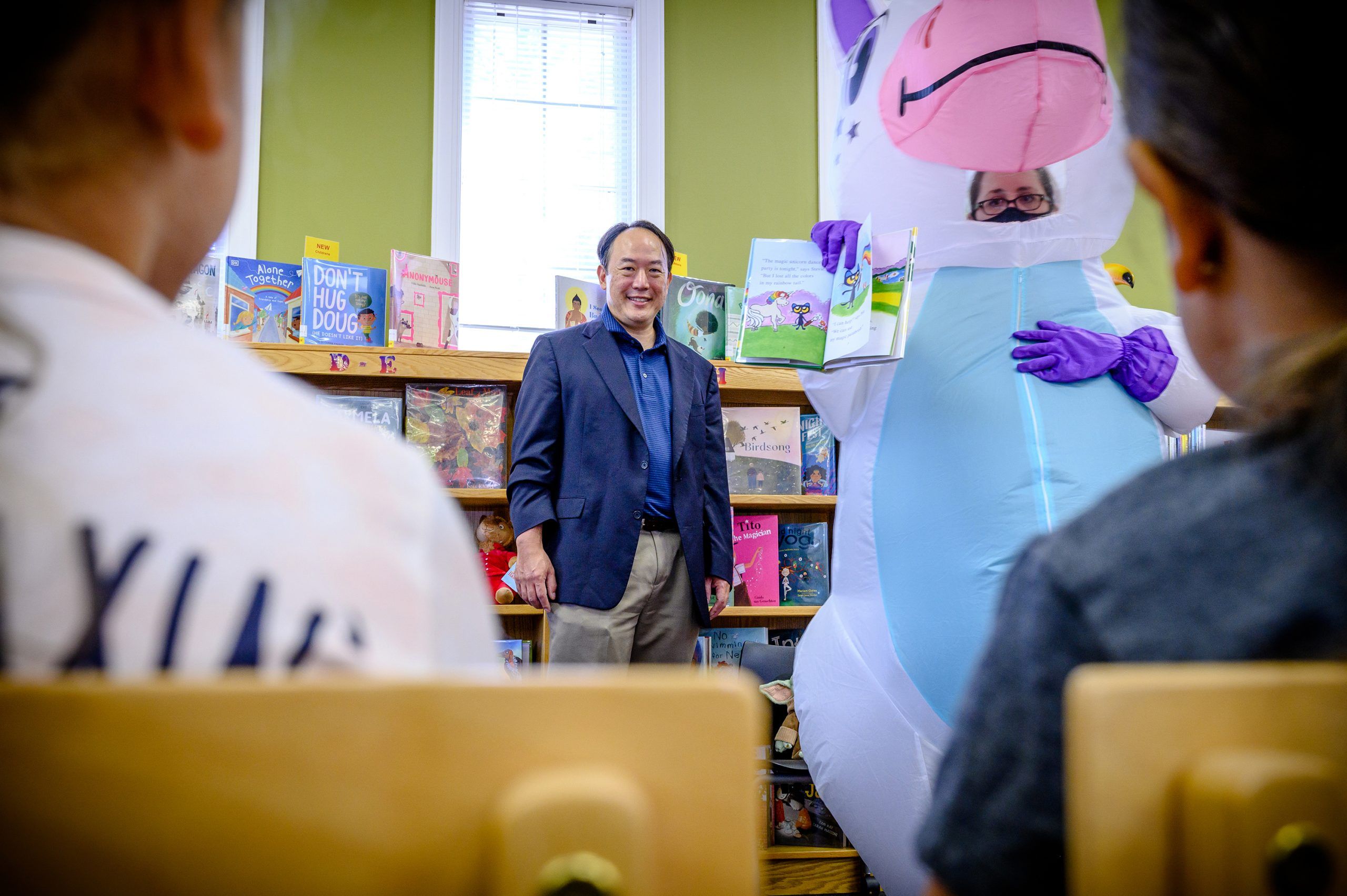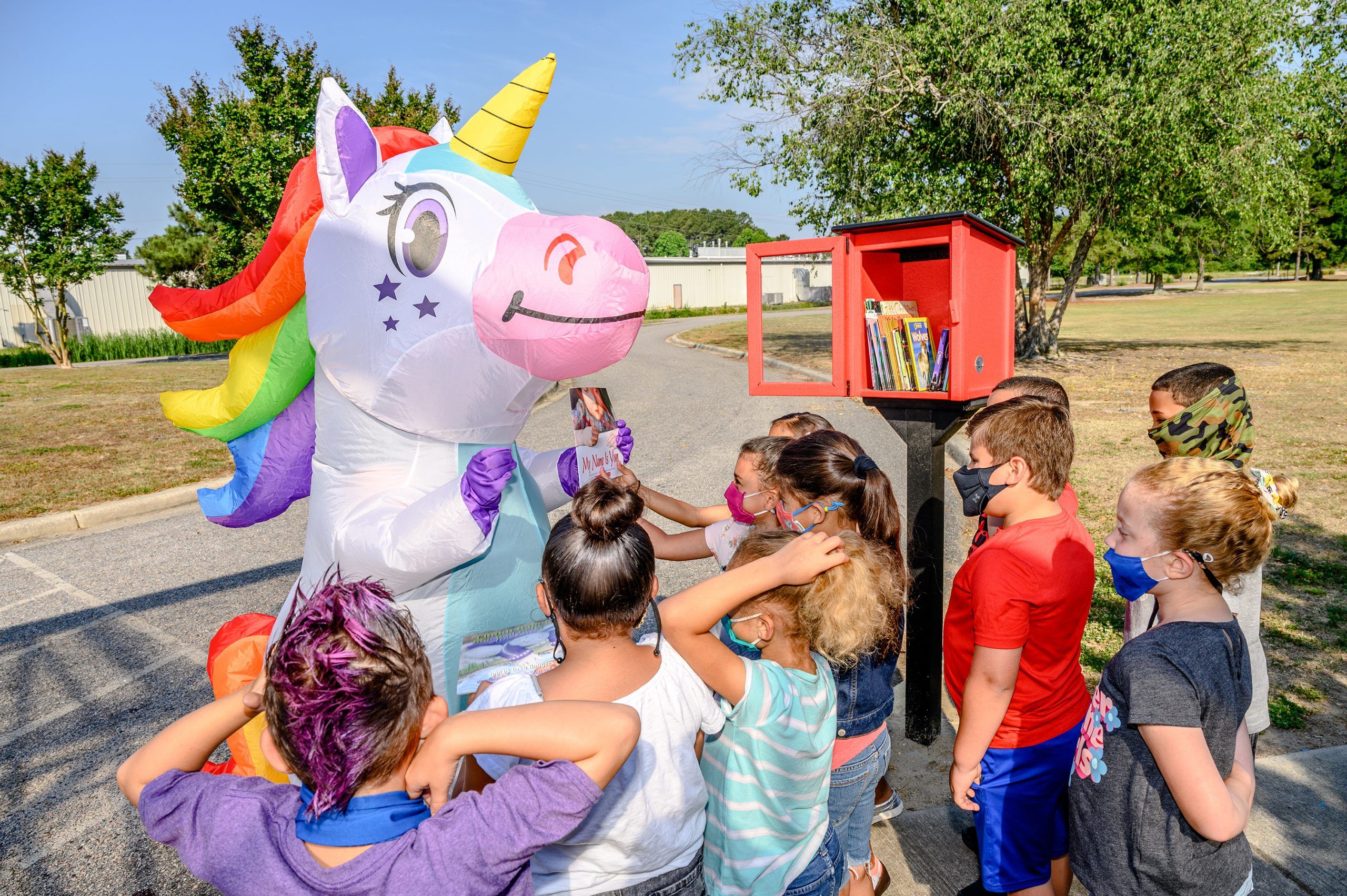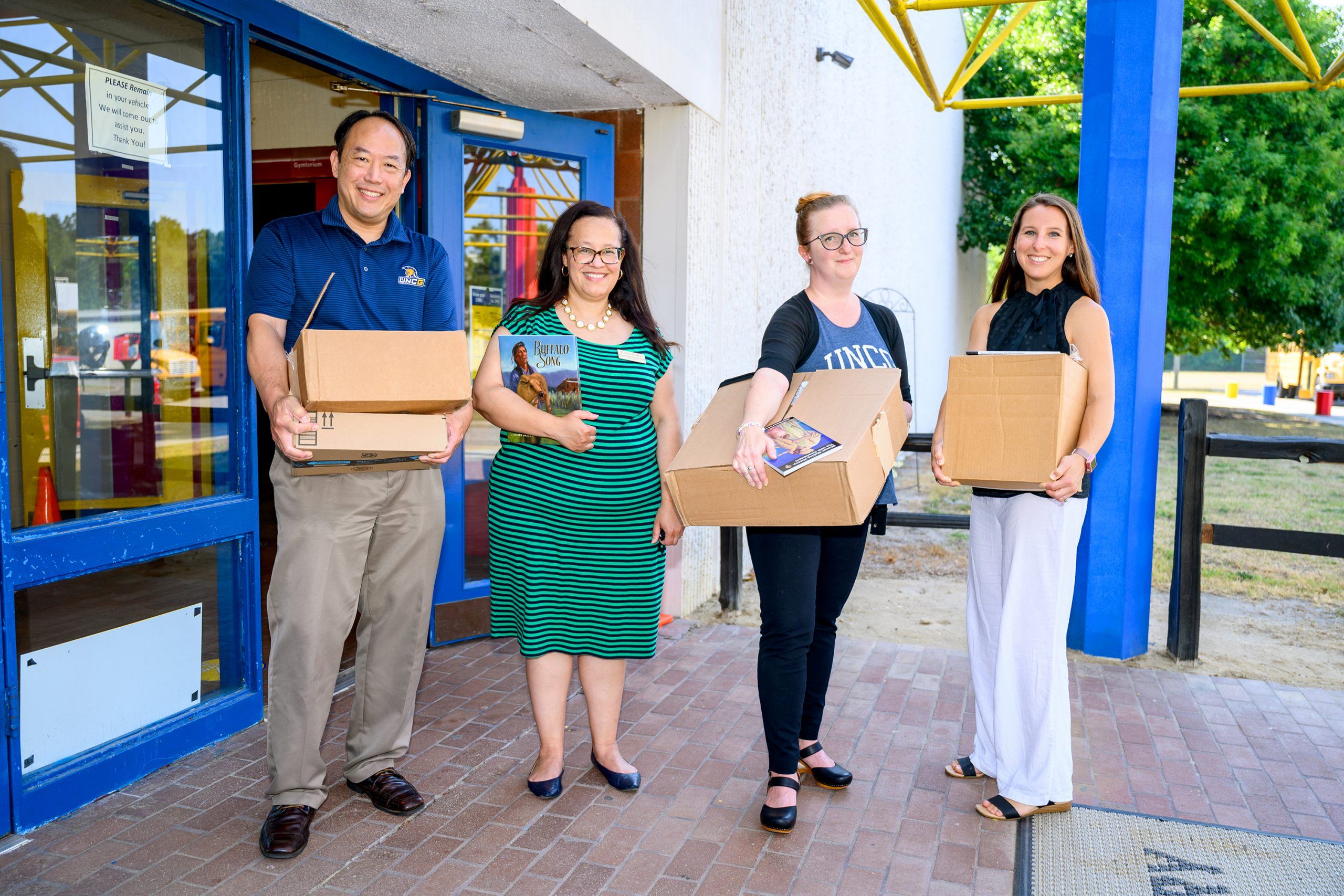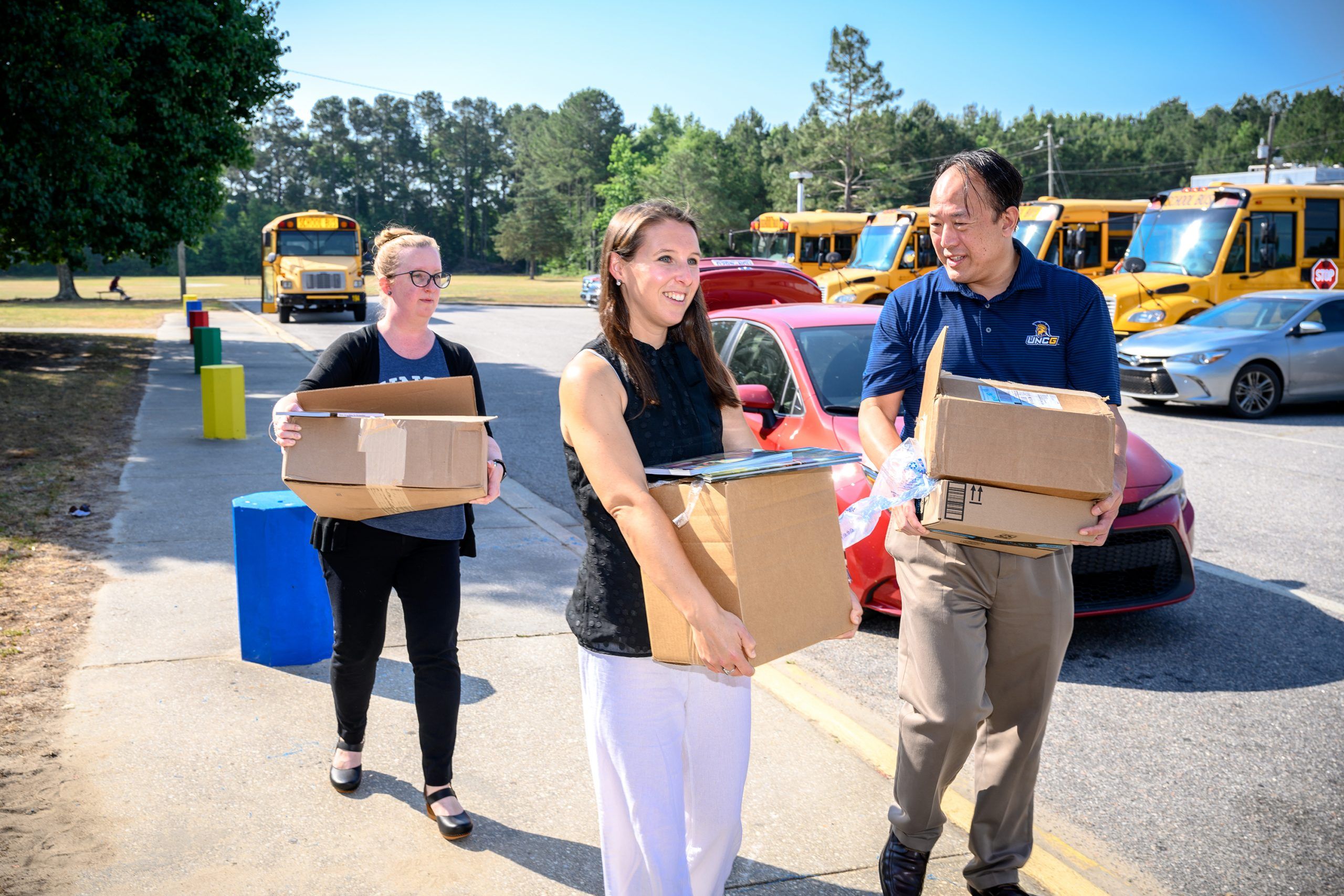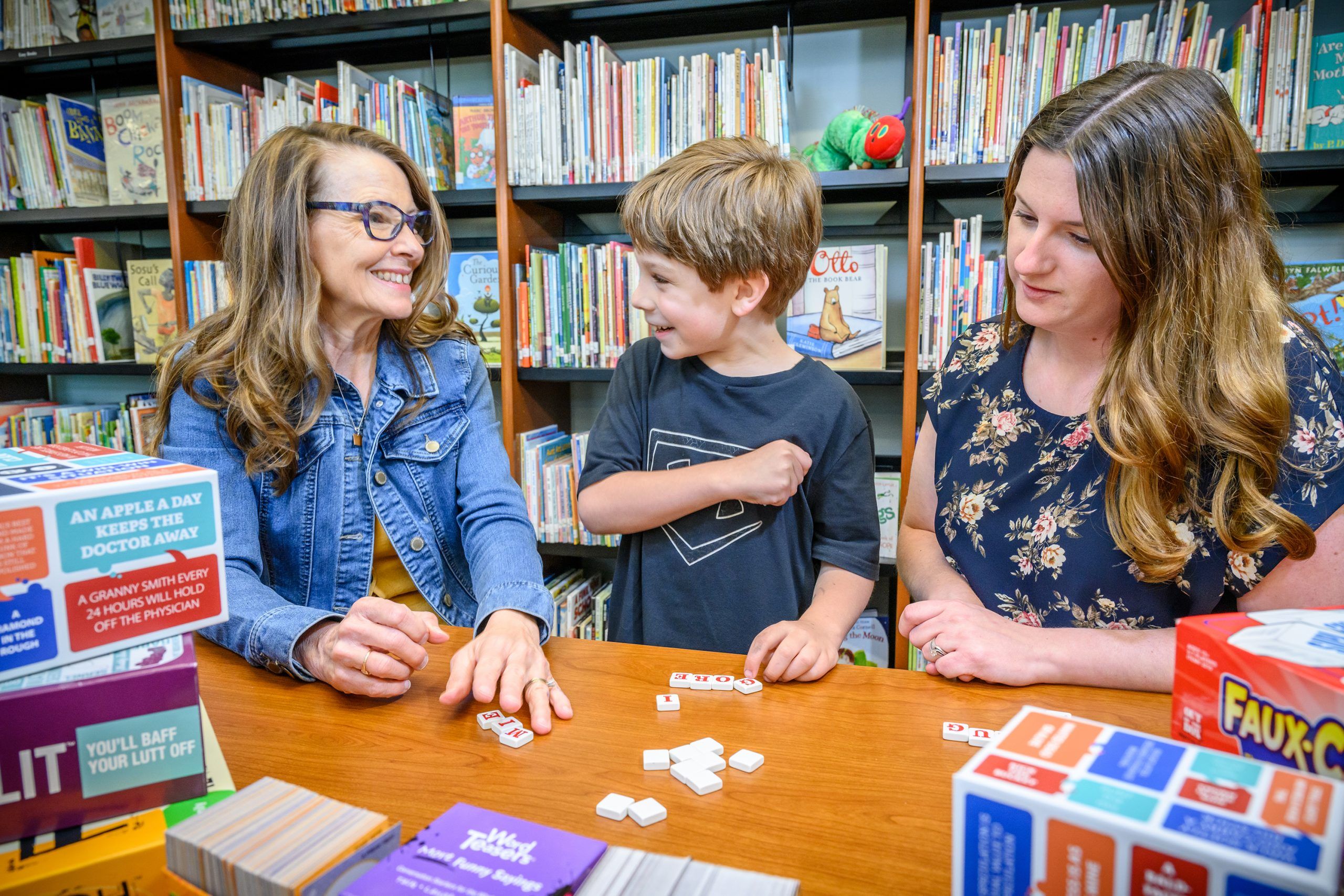Fall 2021
THE FUNDAMENTALS
The Right Idea
Poor health care. Unemployment. These are a few ways that low literacy rates affect individuals in the United States. One in five American adults is illiterate, and nearly two-thirds of fourth graders read below grade level, according to the National Center for Education Statistics. Communities of color, particularly Black and Brown populations, are disproportionately affected.
Native American Child Literacy
READING COMMUNITY
In recent decades child literacy rates have increased among all racial and ethnic groups in America – with one exception.
“Native American children’s literacy levels have decreased dramatically,” says Dr. Anthony Chow.
His investigation into why this is happening recently resulted in a $1.4 million Institute of Museum and Library Services grant to break down barriers to literacy in five Native American communities.
The project Chow launched – Reading Nation Waterfall – partners with the Lumbee Tribe of North Carolina, the Eastern Band of Cherokee Indians, the Northern Cheyenne, the Crow Tribe of Montana, and the Santo Domingo Pueblo, as well as national literacy organizations such as Head Start and Little Free Library. But its origins lie in a study he conducted previously in Browning, Montana, where the Blackfeet Nation resides.
Working with local librarians and community leaders, Chow’s team surveyed 300 members to assess how to increase reading within the nation. “We found that Blackfeet parents valued literacy as important to the future of their children,” Chow says. However, a combination of socioeconomic factors blocked regular access to books.
“Looking at the reality of being a parent in the Blackfeet Nation was jarring,” says Chow. High levels of poverty and unemployment, single-parent homes, and housing insecurity compound to create unstable living situations. And when parents are struggling to just get by, buying books isn’t really a priority, he says. Meanwhile, community and school libraries were poorly funded and lacked books or programs culturally relevant to Blackfeet members.
These realities – rooted in decades of underfunding coupled with a history of eradication and forced assimilation – are what the Reading Nation Waterfall leaders face in their work to increase literacy in Native American communities.
As a first step, the team is installing Little Free Libraries – overseen by local librarians – at elementary schools, community centers, pre-K centers, and other locations regularly frequented by Native American families. The idea is to make access as convenient as possible, Chow says.
“If I’m a parent who works three jobs, how much energy will I have to go to the library? We’re going to the people, as opposed to expecting the people to come to us.”
The team also focuses on including books culturally relevant to Native American youth.
When Chow and his collaborators instituted Little Free Libraries in Browning, over 1,000 books were taken within a short period of time.
Few were returned, but Chow says he’s happy for the kids to take the books home and keep them. Many of the project areas are book deserts, he explains, where families have fewer than 80 books on average. These circumstances have been found to coincide with lower literacy and technology skills.
Over the next three years, the team plans to infuse Reading Nation Waterfall communities with 75,000 books. “We’re shifting the paradigm of what a library is or can be.”
And that’s really the goal for Chow and his team. It’s about changing libraries to fit the communities they serve.
That means sitting with each of the tribal chieftains to ask them about their ideas, identifying community needs and interests, and helping local libraries use that information to offer more relevant programming and resources.
“We need the tribes to embrace the library as a hub of the community. That’s how we build the love of reading,” Chow says. “I view our project as a catalyst, to get that engine running. We want this waterfall of books to become a self-sustaining ecosystem in the community – one that will long outlive our three-year project.”
Once the project is completed in the five nations, Chow and his partners hope to replicate the model nationwide.
Photos: Lumbee children from the local Head Start attend a Reading Nation Waterfall book share, led by Robeson County Library director Katie Fountain as “Petunia the Unicorn.” & Chow, Lumbee Tribe partnership lead Dr. Kim Sellers of UNC Pembroke, and UNCG graduate students Melissa Casey and Anna Sink restock the Little Free Library at Pembroke Elementary School.
Cavanaugh demonstrates literacy instruction methods in the School of Education’s Michel Family Teaching Resource Center, with doctoral student Ashley Gentry.
State Literacy Framework
NC LESSON PLAN
The earlier the better. That’s the motto that Dr. Christie Cavanaugh lives by when it comes to literacy and children.
Research shows that students who can read at grade level by the end of third grade are more likely to graduate from high school, earn a college degree or credential, and experience economic success in adulthood. But only 36% of North Carolina’s fourth graders were proficient in reading in 2019, and that number drops to just over 20% for low-income fourth graders.
Last year, Cavanaugh was chosen by the Board of Governors as one of eight literacy fellows to create a framework to guide all UNC System faculty who prepare preservice teachers for literacy instruction.
“There’s a lot that goes on with young children that sets them up on a path for success in the areas of language and literacy,” says Cavanaugh, a clinical associate professor in the School of Education.
“This framework will ensure our teachers have the essential knowledge and skills regardless of which educator prep program they attend across the
state system.”
Exposure to language through rhymes and songs and even interacting through physical touch can increase brain activity in infants and affect their ability to read and write in later years. But Cavanaugh says that even without those early experiences, students can still excel, they just have to be taught what practitioners call “foundational skills.”
“We should have high expectations for all children and for ourselves,” she says. “We have to provide rich experiences no matter what children come into our classrooms knowing.”
The framework will focus on the period between kindergarten and third grade. During this time, Cavanaugh says educators teach things like decoding – how to translate printed words to sounds for reading – and encoding – how to use sounds to build and write words. These, she says, are fundamental building blocks for literacy down the line.
“Children also require rich language experiences,” she says, to build skills in areas like vocabulary and syntax. Kids need to comprehend words – and how they fit with other words – to read and write.
Many of the methods in the framework aren’t new, but the idea of a common, evidence-based method of preparing teachers for literacy instruction is. “There aren’t many states that offer this level of guidance yet,” says Cavanaugh.
“We’re talking about impacting a lot of teachers who will in turn impact lots of children.”
